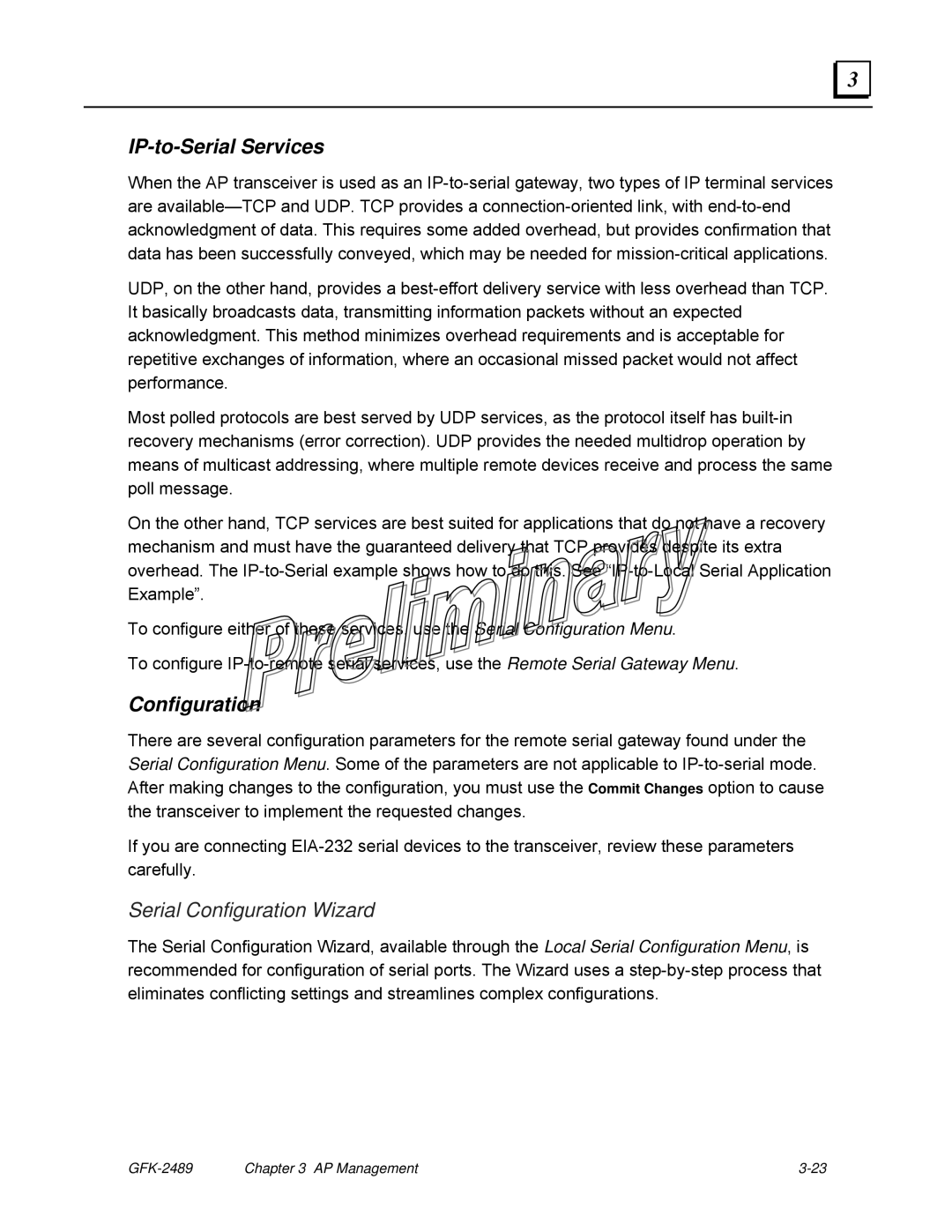Commit Changes
IP-to-Serial Services
When the AP transceiver is used as an IP-to-serial gateway, two types of IP terminal services are available—TCP and UDP. TCP provides a connection-oriented link, with end-to-end acknowledgment of data. This requires some added overhead, but provides confirmation that data has been successfully conveyed, which may be needed for mission-critical applications.
UDP, on the other hand, provides a best-effort delivery service with less overhead than TCP. It basically broadcasts data, transmitting information packets without an expected acknowledgment. This method minimizes overhead requirements and is acceptable for repetitive exchanges of information, where an occasional missed packet would not affect performance.
Most polled protocols are best served by UDP services, as the protocol itself has built-in recovery mechanisms (error correction). UDP provides the needed multidrop operation by means of multicast addressing, where multiple remote devices receive and process the same poll message.
On the other hand, TCP services are best suited for applications that do not have a recovery mechanism and must have the guaranteed delivery that TCP provides despite its extra overhead. The IP-to-Serial example shows how to do this. See “IP-to-Local Serial Application Example”.
To configure either of these services, use the Serial Configuration Menu.
To configure IP-to-remote serial services, use the Remote Serial Gateway Menu.
Configuration
There are several configuration parameters for the remote serial gateway found under the Serial Configuration Menu. Some of the parameters are not applicable to IP-to-serial mode.
After making changes to the configuration, you must use theoption to cause the transceiver to implement the requested changes.
If you are connecting EIA-232 serial devices to the transceiver, review these parameters carefully.
Serial Configuration Wizard
The Serial Configuration Wizard, available through the Local Serial Configuration Menu, is recommended for configuration of serial ports. The Wizard uses a step-by-step process that eliminates conflicting settings and streamlines complex configurations.
GFK-2489 | Chapter 3 AP Management | 3-23 |

